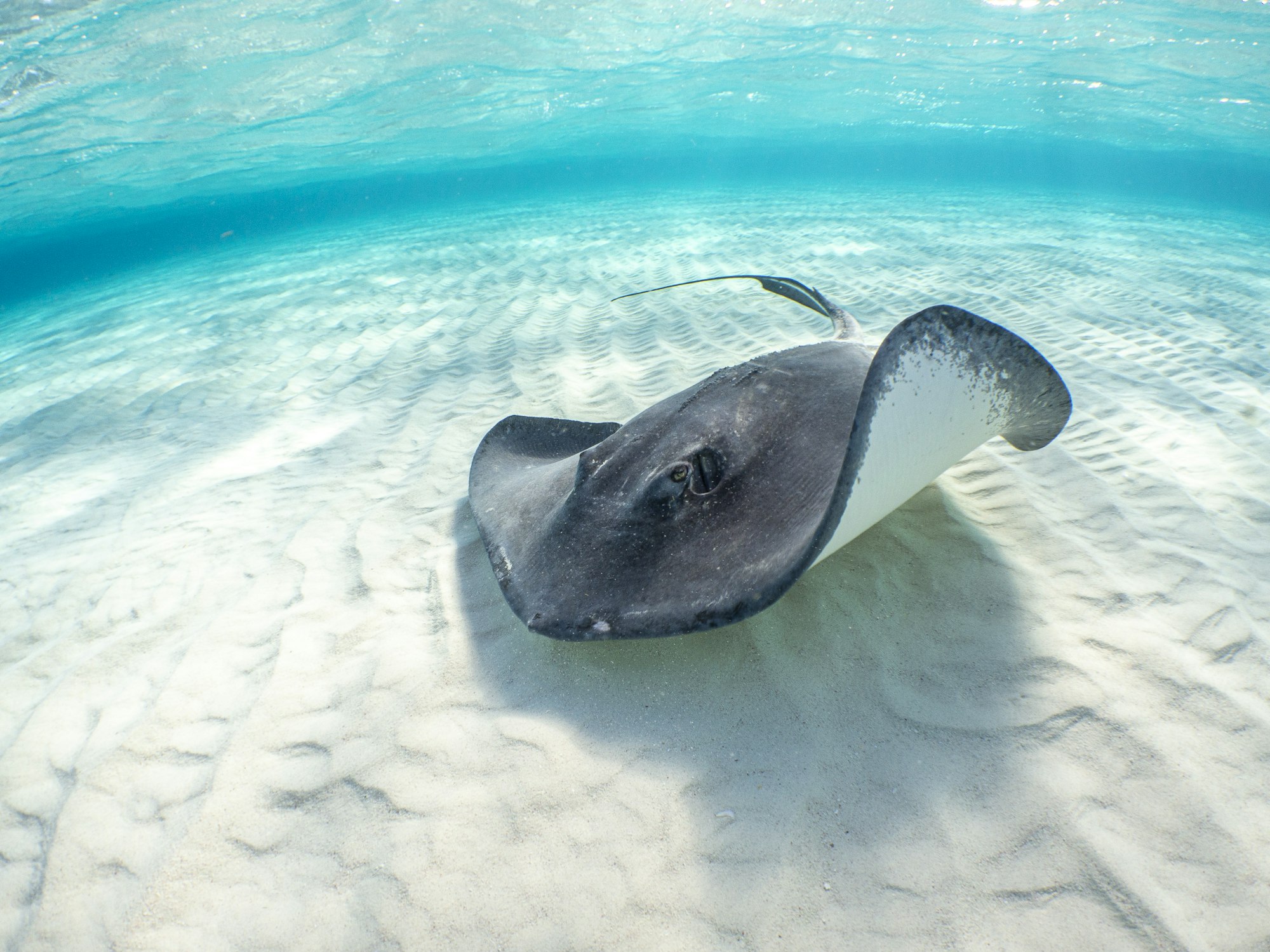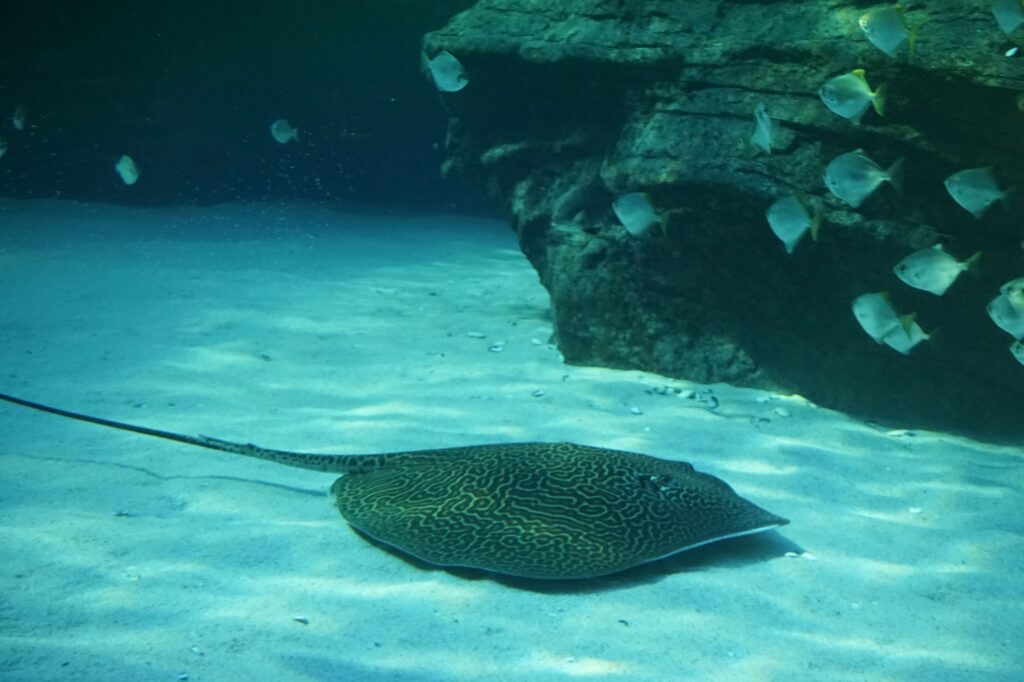Fascinating Facts About Stingrays

Stingrays are unique and often misunderstood sea creatures. Here are interesting facts about these captivating animals:
They Come in Different Shapes and Sizes
There are over 220 known species of stingrays. They come in different shapes, sizes, and colors. Some species have wide, flat bodies that can reach up to 6.5 feet in length, while others are tiny and fit in the palm of your hand.
The largest species is the giant freshwater stingray, which can weigh up to 1,300 pounds!1 The smallest is the [short-tail stingray], measuring only about 4 inches.
Stingrays are Closely Related to Sharks

Stingrays and sharks share a common ancestry. They both belong to the scientific order [Myliobatiformes]. This order contains rays, skates, and guitar fishes.
Like sharks, stingrays have a cartilage skeleton rather than bone. This allows them to be lightweight and maneuverable swimmers2. Their streamlined bodies are perfect for gliding effortlessly through the water.
They Have Venomous Tail Spines
Stingrays have one or more sharp, venomous barbs on their tails. These barbs are a self-defense mechanism.
- When threatened, a stingray can whip its tail upward. This drives the serrated spine into an attacker.
- The spines can puncture the skin and release venom that causes significant pain. For humans, it feels like a bad bee or wasp sting.
- Some species have venom potent enough to be lethal to humans if not properly treated.
The tails can also be used to stab prey like small fish and shellfish3.
Stingrays Bury Themselves in Sand
Many species of stingrays have flat or uneven bodies that allow them to effectively camouflage themselves by burying in sand or mud.
Their eyes and spiracles (blowholes) remain above the seabed so they can spot prey and breathe. When prey swims by, they burst out in a flash!
They Have Electrical Supersenses
Stingrays have special gel-filled pores on their snouts that allow them to detect electrical fields. This gives them a “sixth sense” that aids in finding food.
They can sense the natural electrical impulses given off by potential prey that is buried in sediment. Pretty amazing!
Stingrays are Ovoviviparous
This means the females retain the eggs inside their bodies during development. They eventually give live birth to fully formed pups.
Litters can consist of 5-13 pups, depending on the species. The gestation period ranges from 4-12 months.
Many Stingrays Migrate Long Distances
Some species, like the [bat ray], are highly migratory and travel in large schools. They migrate up to 1,000 miles between feeding and breeding grounds.
Their migration patterns are still being studied, but some movements seem to correlate with changes in water temperature.
Stingrays are Important to Ecosystems

As mid-level predators, stingrays help regulate food chain dynamics in their environments. They feast on mollusks, small fish, shrimp, squid, and crustaceans.
In turn, they are preyed upon by sharks, killer whales, sea lions, and crocodiles. Their bodies also provide food for bottom-dwelling scavengers when they die.
By disturbing bottom sediments while foraging, they stir up nutrients and oxygen to help other species thrive.
Some Species Form Social Groups
Many stingrays are solitary, but others form social groups. The [cowtail stingray] congregates in large schools during certain times of year.
Scientists think this behavior may relate to migration, reproduction, or protection from predators. Social groups likely provide safety in numbers.
Stingrays are Easily Startled
Despite having venomous barbs, stingrays are quite docile and easily startled. They will usually flee from disturbances through rapid undulations of their large pectoral fins.
If cornered, trapped, or accidentally stepped on, their instinct is to whip their tail in self-defense. This is why stingray injuries commonly happen in shallow water.
Conclusion
While the venomous tails inspire fear in some, stingrays are not typically aggressive. They are unique fish that play important roles in ocean ecosystems. Learning more fascinating facts about these rays continues to reveal surprises. One thing is for sure – they captivate the imagination!



